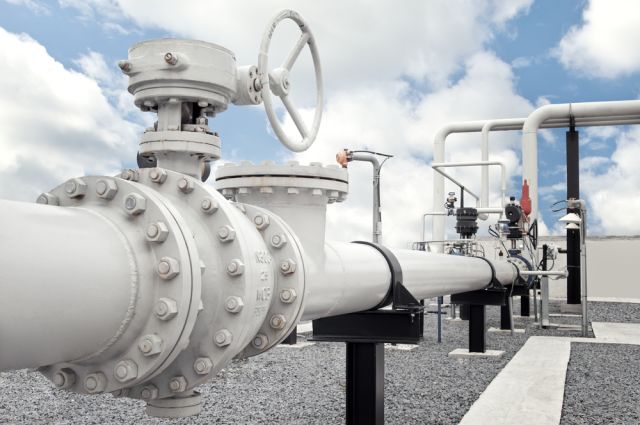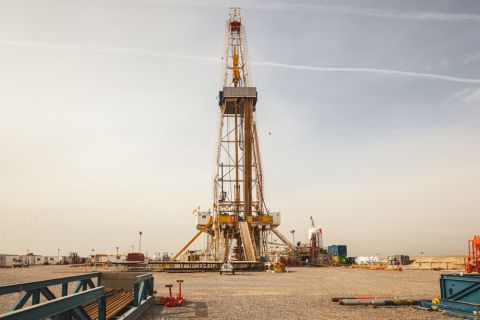
Midstream companies are expected to add more than 2.8 Bcf/d in gas processing capacity in the Permian in 2024 and approximately 2.3 Bcf/d in 2025. (Source: Shutterstock)
Crude production is about to pick up in the Permian Basin, analysts say.
Permian players are expanding gas processing and takeaway capacity in the basin—an indication of plans to ramp up crude production over the next two years, according to analysts tracking the region.
Permian crude production has flattened since February, staying within striking distance of 6 MMbbl/d since last fall, according to a study by analytical firm RBN Energy. Consolidation, capital discipline and a lack of natural gas takeaway capacity have led E&Ps to keep production relatively steady.
In response, midstream companies in the region are rapidly developing gas processing plants, analytical firm RBN Energy wrote in a study.
Midstream companies are expected to add more than 2.8 Bcf/d in gas processing capacity in the region in 2024 and approximately 2.3 Bcf/d in 2025, even though the region has enough processing capacity for its current needs.
“Midstreamers continue to design and build new gas processing capacity, virtually all of it backed by producer commitments,” RBN analyst Housley Carr wrote. “That suggests that E&Ps and integrated production/refining giants like Exxon Mobil and Chevron expect to ramp up their production of Permian crude oil and associated gas over the next year or two.”
Over the last few years, Permian crude and natural gas production have become more intertwined, with gas-to-oil ratios (GORs) rising with continued exploitation of the shale play. At the end of 2023, the U.S. Energy Information Administration noted that the GORs in the top three Permian oil plays had tripled since 2018.
Several Permian midstream companies have made announcements in 2024 about expanding gas processing infrastructure. In April, Enterprise Products Partners announced a project in the Delaware Basin, the Mentone West 2 Plant, expected to go into service in 2026 with a capacity of 300 MMcf/d.
On May 22, Piñon Midstream announced plans for a large-scale expansion of sour gas processing capacity to 460 MMcf/d at its Dark Horse Treating Facility.
East Daley Analytics (EDA), while noticing the large-scale increase in processing capacity, agrees the Permian will see a rise in crude production, but says a pipeline opening will be the driving force.
East Daley’s models show growth in Permian oil production will be largely driven by the relief of natural gas constraints by the end of 2024, wrote Maria Paz Urdaneta, U.S. production manager for East Daley.
The Matterhorn Express Pipeline is expected to come online after July and will provide 2.5 Bcf/d in extra natural gas takeaway.
East Daley has described 2024 as a “mullet year” for the Permian—business in the front, party in the back—as new gas takeaway capacity comes online in the latter part of the year.
“From a crude-side perspective, the Permian growth story is set to continue in 2024 after natural gas constraints are relieved,” Urdaneta wrote. EDA expects Permian crude growth will be weighted towards the back half of the year, tied to start up of the Matterhorn.
The region’s liquids production grew by about 500,000 bbl/d on average in 2023 and should grow by about 332,000 bbl/d in 2024 and by 540,000 bbl/d in 2025, according to EDA’s models.
However, Urdenta said the extra gas processing capacity could point to more crude production than the company is currently forecasting.
“The growth in the natural gas processing capacity of the Permian during 2024 and 2025 gives the basin the possibility to handle higher GORs and a higher growth pace than what we currently are modeling,” she said.
Recommended Reading
Industry Consolidation Reshapes List of Top 100 Private Producers in the Lower 48
2024-06-24 - Public-private M&A brings new players to top slots in private operators list.
SilverBow Makes Horseshoe Lateral in Austin Chalk
2024-05-01 - SilverBow Resources’ 8,900-foot lateral was drilled in Live Oak County at the intersection of South Texas’ oil and condensate phases. It's a first in the Chalk.
URTeC: E&Ps Tap Refrac Playbook for Eagle Ford, Bakken Inventory
2024-06-17 - Refracs and other redevelopment projects might not be needle-moving growth drivers—but they’re becoming more common for E&Ps levered in maturing plays like the Eagle Ford and Bakken, experts discussed at URTeC 2024.
Crescent Energy: Bigger Uinta Frac Now Making 60% More Boe
2024-05-10 - Crescent Energy also reported companywide growth in D&C speeds, while well costs have declined 10%.
TotalEnergies Acquires Eagle Ford Interest, Ups Texas NatGas Production
2024-04-08 - TotalEnergies’ 20% interest in the Eagle Ford’s Dorado Field will increase its natural gas production in Texas by 50 MMcf/d in 2024.





